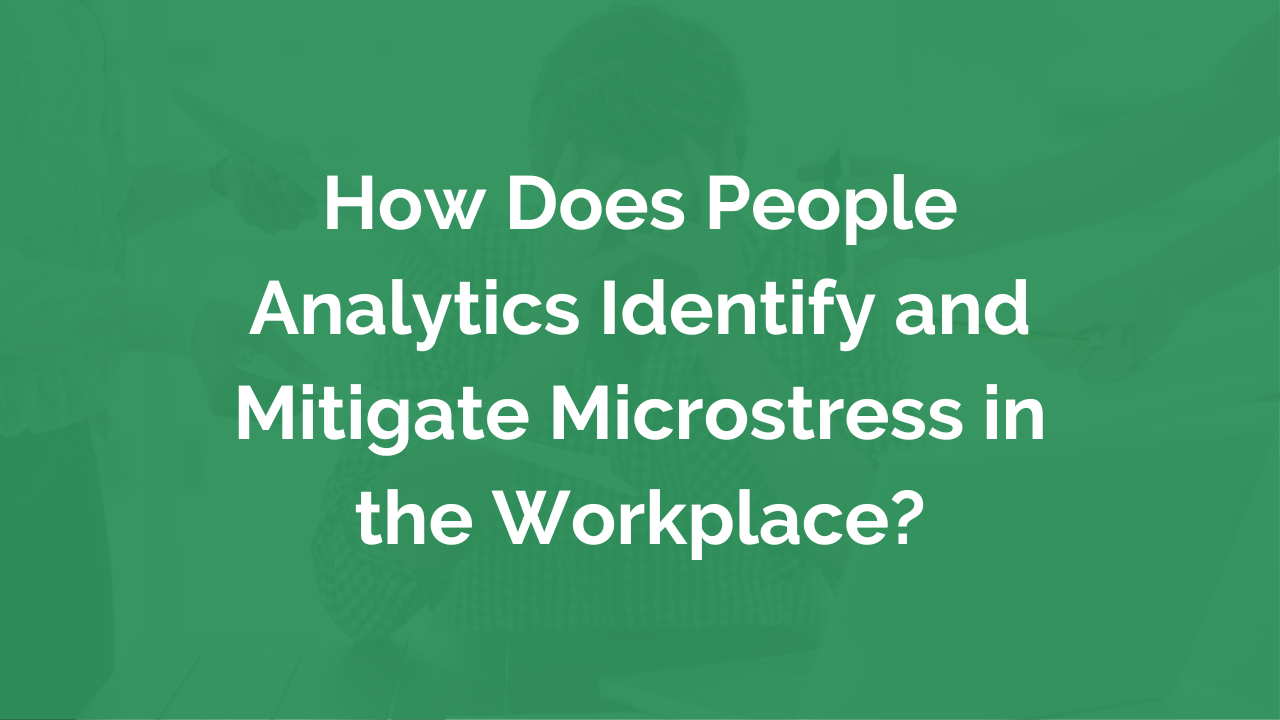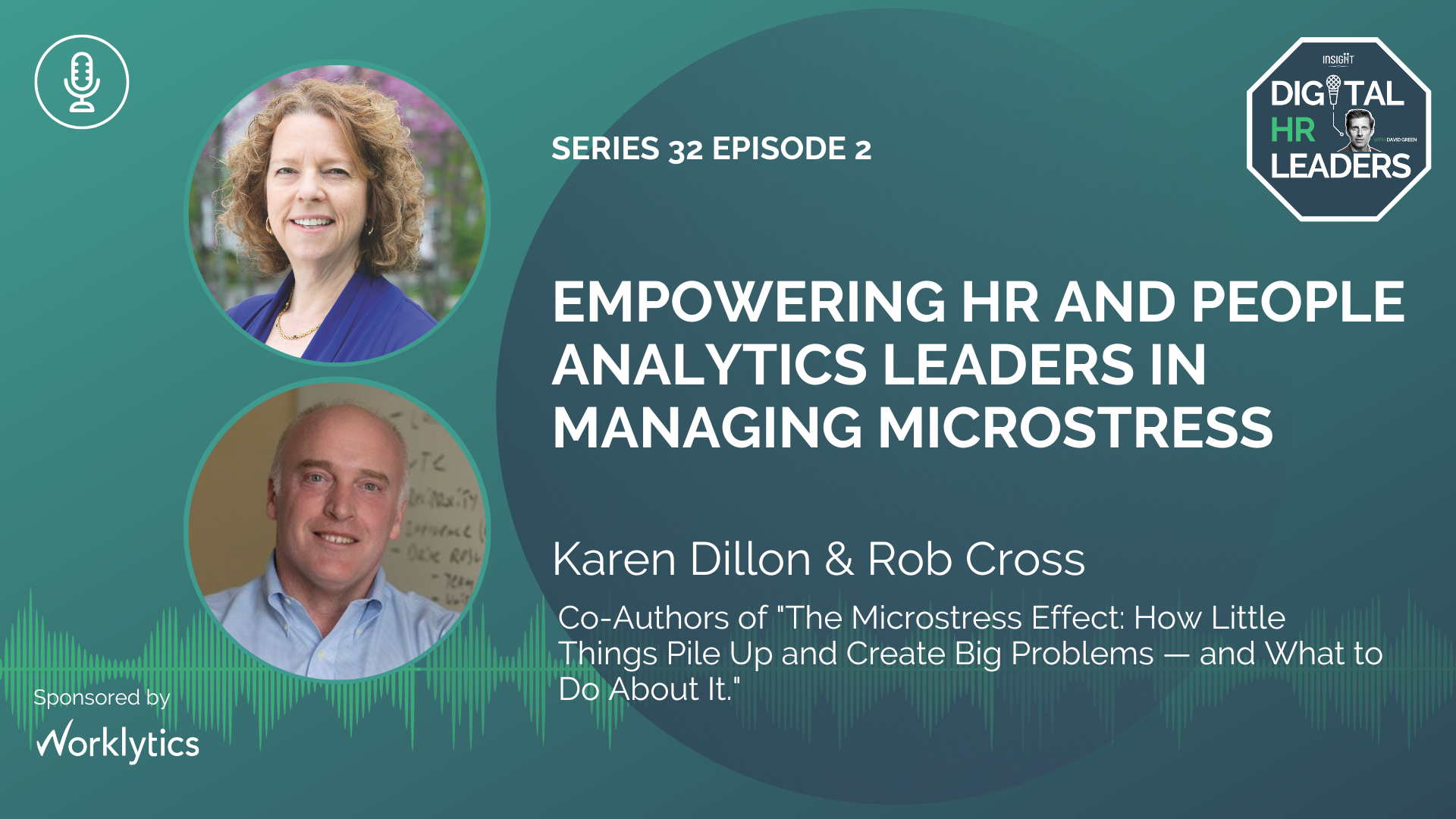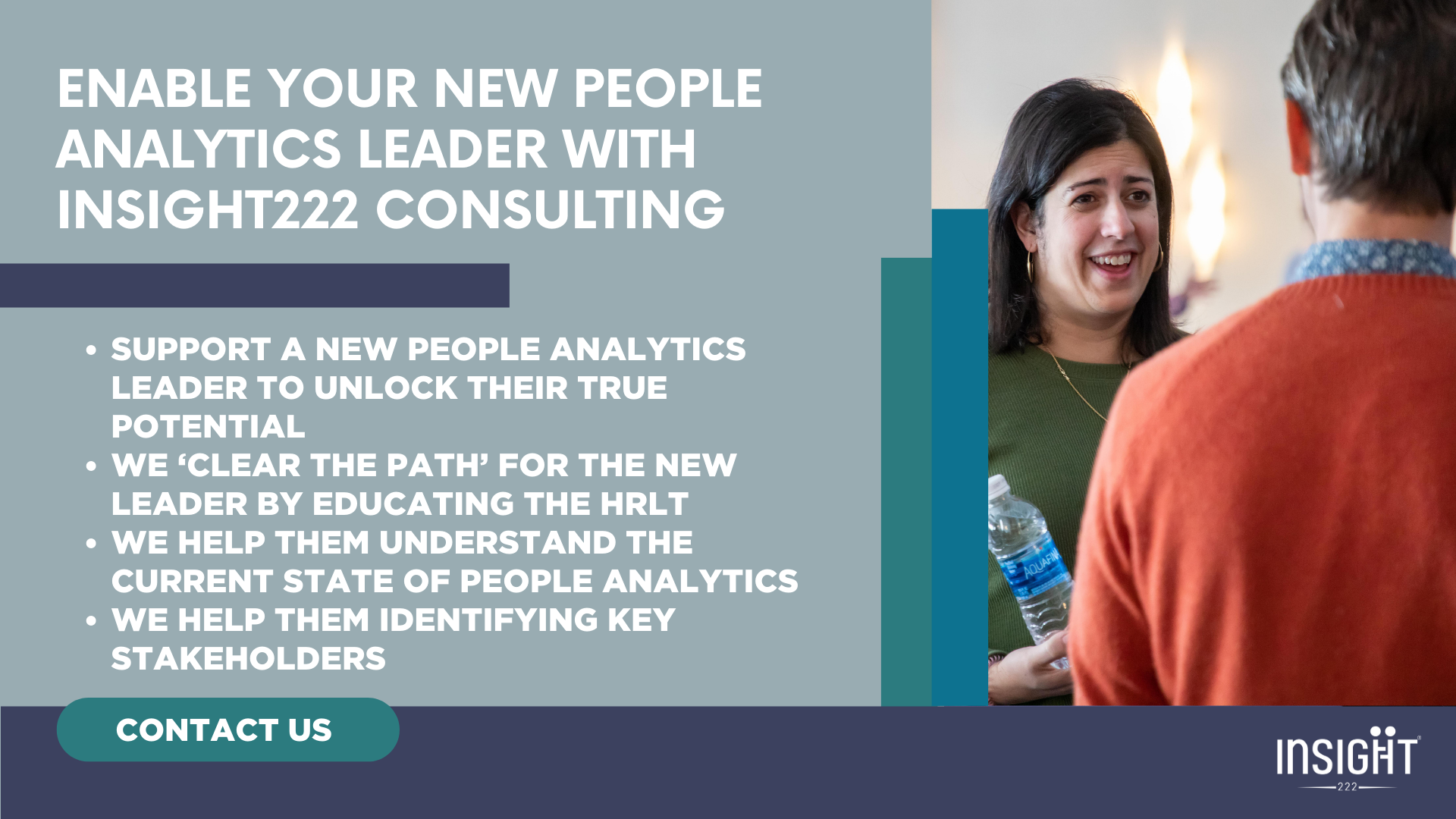How Does People Analytics Identify and Mitigate Microstress in the Workplace?
We have all been there - feeling overwhelmed at work, drowning in demands from all directions. The endless to-do list that keeps accumulating because of the back-to-back meetings and notifications from emails or Slack messages, or the colleague whose stress-filled aura lingers around the office and affects everyone around them. All these symptoms point to one thing: microstress.
What is Microstress?
One way to explain micro-stress is to highlight what it is not. Karen Dillon, former Editor of Harvard Business Review Magazine and co-author of the book "The Microstress Effect: How Little Things Pile Up and Create Big Problems — and What to Do about It." explains on the Digital HR Leaders Podcast:
"Macro stress are large things that happen in your life, that sometimes there's a bad person or major health issue, you lose a job, you have a really toxic boss, you're really worried about your child's behaviour. Those are stressors that we know, recognise and can have empathy and sympathy for, receive empathy and have sympathy and empathy for other people. And as a society, we recognise that they take a toll on us, and there are things that we coach people to do when they have those kinds of stresses in their life.
But micro stressors are such tiny, brief moments of stress that come specifically from interactions with other people that are so brief that our brains literally barely register them. Our frontal lobe, which is the sort of mental scratch pad of our brain, barely registers it because we're under this constant form of stress that we almost don't have language to talk about, but our bodies do. So, the body doesn't distinguish between different forms of stress."
All types of stress, no matter how small, come with a physiological cost, and as Jacqueline Brassey, Chief Scientist and Director of Research for People and Organisation Performance at McKinsey and Co., expresses:
"...if not managed well, it can lead to burnout, it can lead to lower productivity, and there's a lot that's related to it."
Therefore, as HR, People Analytics, and People Leaders, it is our responsibility to understand these micro stressors to create the most effective stress management strategies to combat workplace stress and create a culture that champions of employee health and employee wellbeing.
Capacity-Draining Stressors: These stressors usually stem from the external aspects of our work or personal lives. Examples include sudden increases in workload, constant interruptions, or misalignment in the responsibilities of colleagues.
Emotion-Depleting Stressors: These disruptions to the internal "well" of peace, fortitude, and resilience can be particularly damaging. Such stressors include confrontational conversations, the energy of stressed colleagues, or unreliable, untrustworthy colleagues.
Identity-Challenging Stressors: These question our sense of self and values. They trigger the uncomfortable feeling that we are not the person we want to be, which can chip away at our motivation and sense of purpose. This form of stress can arise when we are pressured to pursue our goals, have negative interactions that deplete our self-worth, or disrupt our networks.
The Role of People Analytics in Identifying Microstress
In the quest to uncover and counteract microstress, the use of data analysis in HR can be invaluable. This multifaceted approach goes beyond the surface, utilising data-driven insights to pinpoint the sources of workplace stress and devise effective HR strategies to enhance the employee experience and ultimately avoid workplace burnout:
Surface Level Indicators
At the surface level, people analytics starts with scrutinising attendance data. Tracking patterns of consistently low attendance or instances of frequent absenteeism followed by sudden spikes in presenteeism can hint at a deeper problem. These patterns suggest that employees feel compelled to show up even when they're not at their best.
Then, correlating attendance records with performance metrics, such as productivity, job satisfaction, and engagement scores, can also provide an indication of microstress. For example, if an employee's performance declines shortly after a sudden change in their schedule or responsibilities or decreased output during periods of high presenteeism could signify an issue worth investigating.
Delving Deeper into the Voice of Employees
Offering insights into employee perception and experiences, surveys are often a staple in people analytics. When the right questions are asked, whether qualitative or quantitative, the data can reveal microstressors that employees face daily.
With natural language processing (NLP) technologies now available to capture sentiment within the text and voice-based responses, emotional nuances, themes, and keywords present in these responses can identify specific microstress triggers that might otherwise go unnoticed.
For instance, you could gather text responses from a survey and run them through an NLP tool to automatically identify stress-related words, such as "overwhelmed" or "exhausted" in communication channels. Similarly, you can gain voice data insights from audio recordings of interviews and meetings, identifying stress-related words or phrases that employees might use.
This data can then be correlated with other factors, such as employee behaviour and performance, providing a more holistic view of the situation.
Mapping Interactions
Then we have Organisational Network Analysis (ONA). Organisational Network Analysis uncovers how employees connect and collaborate. It can uncover patterns of microstress by analysing how often employees interact and with whom.
Organisational Network Analysis enables people analytics teams to identify whether certain individuals are experiencing more or less stress than others through the lack of connection or the magnitude of social isolation. It also reveals whether certain connections are causing more or less stress, such as those who don't work together well or are in competitive situations with each other.
But more importantly, this analysis can identify influential leaders who can model microstress avoidance behaviours and become the advocates of mental health and wellbeing leaders of stress management for the organisation.
Crafting Microstress Mitigation Strategies
Jacqueline Brassey and colleagues, in their research for McKinsey Health Institute, Addressing Employee Burnout: Are Solving the right Problem?, and Rob Cross and Karen Dillon, in their co-authored book, "The Microstress Effect: How Little Things Pile Up and Create Big Problems — and What to Do about It.", both stress the importance of leaders and people managers in creating a culture of wellbeing. They highlight the need to role model and create the norms of employee wellbeing, and be attentive to their team members' experiences and mental health. This includes microstressors.
By understanding and mapping the various origins of workplace stress through data analysis, HR leaders can then develop effective plans to help their employees better manage these stressors. Below are a few ideas for how this could be done:
Task Redistribution: Insights into workload imbalances, and by identifying teams or individuals burdened with capacity-draining microstressors, leaders can redistribute tasks to create a more balanced work environment.
Communication Revamp: Insights from sentiment analysis can inform the creation of communication guidelines that encourage clarity and after-hours disengagement, significantly easing microstress stemming from misunderstandings or information overload.
Policy Enhancement: Policies that inadvertently contribute to microstress can be revised based on data-driven insights, creating a more supportive work environment.
Leadership Transformation: With the knowledge of identity-challenging micro stressors, leaders can undergo specialised training to enhance their emotional intelligence and leadership skills.
Pioneering a Microstress-Resilient Future
When harnessed effectively, people analytics and data analysis in HR can be a priceless asset in uncovering and addressing microstressors within the workplace culture. And by delving into the core of these stressors, HR can cultivate pragmatic strategies that foster employee wellbeing without compromising performance.
When organisations prioritise employee wellbeing and mental health, they set a precedent for creating a healthier workplace culture where workplace stress is managed and avoided. This builds a foundation for greater productivity, job satisfaction, and more meaningful connections between employees and the organisation.
No workplace will ever be stress free, but by embracing the power of people analytics, organisations can be better equipped to identify and mitigate micro-stressors in their workplace.
It's up to all of us to take the steps towards creating a future where stress is managed proactively and every employee feels supported and empowered.
Enable Your People Analytics Leader and Drive Business Success With Our Insight222 Consulting Service
The right partner can help you on this journey. That's why at Insight222, we have created our 'Enable' consulting services to support you in developing a successful people analytics program and empower your new People Analytics Leader. Through this process, we will help clear the path for the new leader by understanding the current state of your people analytics, identifying key stakeholders, and supporting them during their first 100 days.
Our experienced team of people analytics consultants can help you maximise your HR analytics initiatives and unlock greater business value. So, if you're ready to take your people analytics to the next level, contact us today.




